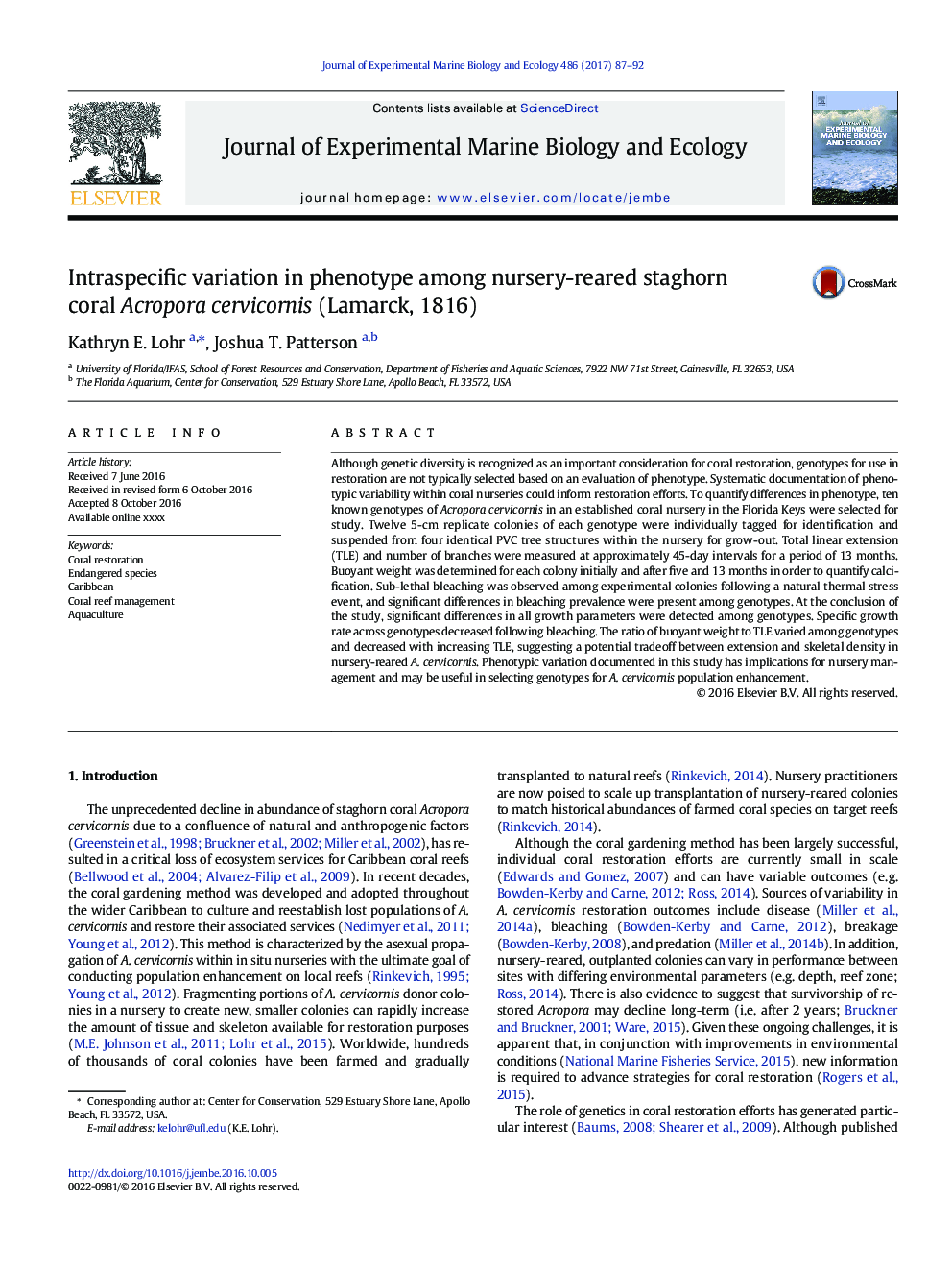| Article ID | Journal | Published Year | Pages | File Type |
|---|---|---|---|---|
| 4395169 | Journal of Experimental Marine Biology and Ecology | 2017 | 6 Pages |
•Growth and branching varied among known A. cervicornis genotypes in a nursery.•Bleaching frequency differed among genotypes; growth rate declined after bleaching.•Faster-growing genotypes had less buoyant weight per cm of total linear extension.•Results support the use of a trait-based system for A. cervicornis restoration.
Although genetic diversity is recognized as an important consideration for coral restoration, genotypes for use in restoration are not typically selected based on an evaluation of phenotype. Systematic documentation of phenotypic variability within coral nurseries could inform restoration efforts. To quantify differences in phenotype, ten known genotypes of Acropora cervicornis in an established coral nursery in the Florida Keys were selected for study. Twelve 5-cm replicate colonies of each genotype were individually tagged for identification and suspended from four identical PVC tree structures within the nursery for grow-out. Total linear extension (TLE) and number of branches were measured at approximately 45-day intervals for a period of 13 months. Buoyant weight was determined for each colony initially and after five and 13 months in order to quantify calcification. Sub-lethal bleaching was observed among experimental colonies following a natural thermal stress event, and significant differences in bleaching prevalence were present among genotypes. At the conclusion of the study, significant differences in all growth parameters were detected among genotypes. Specific growth rate across genotypes decreased following bleaching. The ratio of buoyant weight to TLE varied among genotypes and decreased with increasing TLE, suggesting a potential tradeoff between extension and skeletal density in nursery-reared A. cervicornis. Phenotypic variation documented in this study has implications for nursery management and may be useful in selecting genotypes for A. cervicornis population enhancement.
